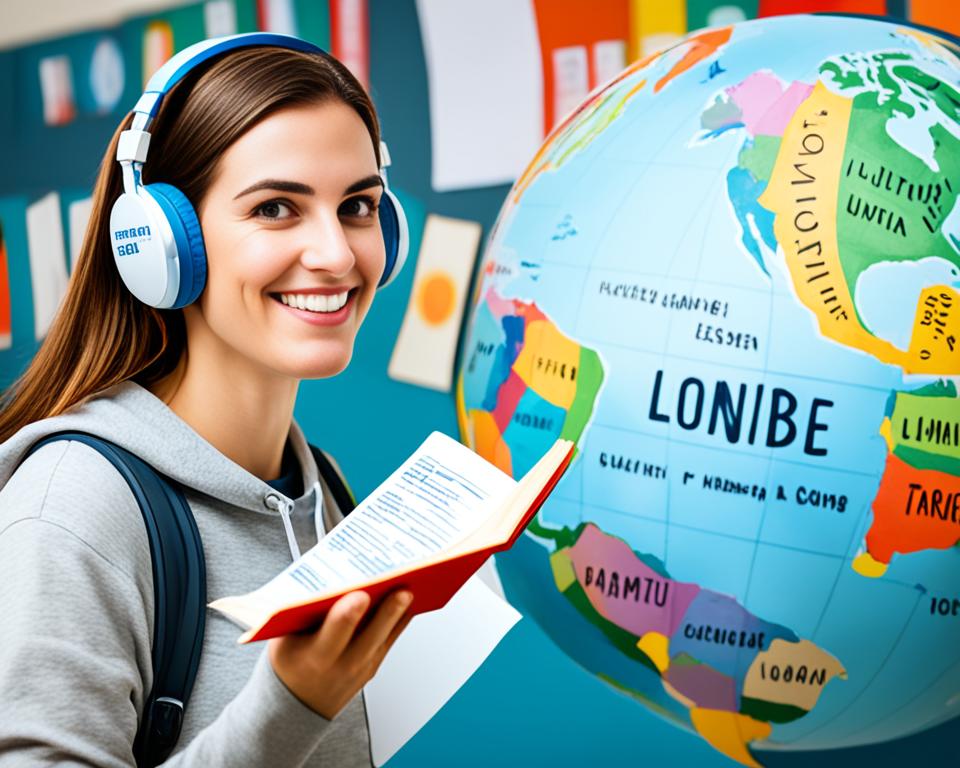In our globalized world, the ability to communicate across linguistic and cultural boundaries has become increasingly crucial, particularly in the realm of international art trading. As an art enthusiast and a passionate advocate for global citizenship, I firmly believe that mastering multiple languages can significantly enhance one’s opportunities and experiences in the dynamic art market.
Acquiring language skills not only opens the door to cross-cultural communication but also facilitates global connections and unlocks new horizons in the art world. By learning a second or third language, individuals can engage more deeply with diverse artistic traditions, foster meaningful collaborations with international artists, and navigate the intricacies of the global art trading landscape with greater ease and confidence.
The language education journey is a transformative process that empowers individuals to develop the linguistic and cultural competencies needed to thrive in our interconnected world. Through multilingual learning, art professionals can cultivate the intercultural competence required to effectively engage with the linguistic diversity that permeates the international art market, ultimately enhancing their global citizenship and their ability to succeed in international art trading.
Key Takeaways
- Mastering multiple languages can open up new opportunities in the global art market.
- Language skills enable cross-cultural communication and facilitate global connections.
- The language education journey develops intercultural competence and linguistic diversity.
- Personalized language pathways and educational technology can support language acquisition.
- Multilingual skills are essential for navigating the international art trading landscape.
Introduction to Language Education Journey
The language education journey can be a transformative experience, expanding one’s worldview and opening doors to new cultural experiences. By embarking on this journey, individuals can develop the essential skills needed to navigate the interconnected global landscape, including in the art world. Mastering multiple languages can unlock a deeper understanding of diverse cultures and facilitate meaningful connections across borders.
A language education journey enables individuals to develop multilingual learning capabilities, allowing them to engage with the world on a global citizenship level. Through immersive cultural immersion experiences, learners can gain a profound appreciation for linguistic diversity and its role in shaping the international art market.
| Key Benefits of a Language Education Journey |
|---|
| Enhanced multilingual learning skills |
| Deeper understanding of global citizenship and cultural exchange |
| Exposure to transformative cultural immersion experiences |
| Expanded perspectives and worldviews |
| Increased opportunities in the international art trading landscape |
By embarking on a language education journey, individuals can equip themselves with the linguistic and cultural competencies needed to thrive in the global art world, fostering new connections, collaborations, and opportunities for growth.
Language Skills: Unlocking the World of Art
Mastering language skills can be a powerful tool for artists, enabling them to engage in cross-cultural communication and collaboration. By bridging linguistic barriers, artists can share their work, learn from diverse perspectives, and foster greater understanding between cultures.
Cross-Cultural Communication in Art
In the global art community, language skills are essential for effective communication and collaboration. Artists who possess multilingual learning abilities can navigate the complexities of cultural exchange, sharing their creative visions and insights with a wider international audience.
Immersive Language Programs for Artists
To enhance their language skills and deepen their understanding of diverse cultural contexts, many artists have found value in immersive language programs. These transformative experiences allow artists to immerse themselves in new linguistic and cultural environments, providing them with the tools to engage more meaningfully with the international art world.
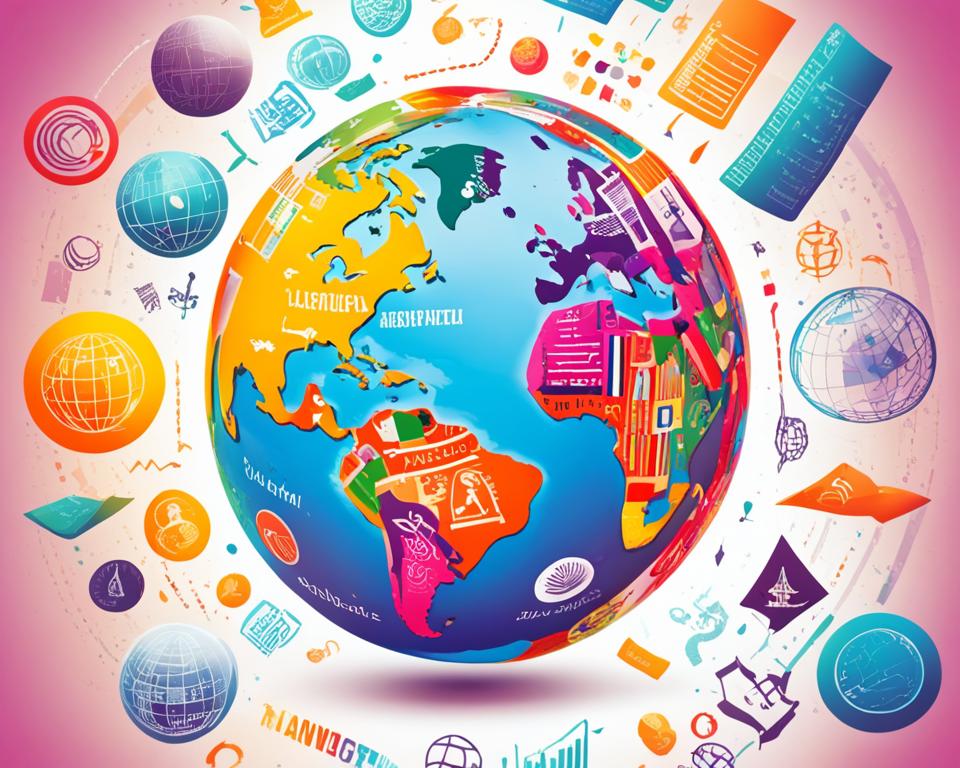
Linguistic Diversity in the Art Market
As I delved into my family’s history, I made a remarkable discovery – my grandfather’s German work card, meticulously translated into French. This anecdote serves as a poignant reminder of the linguistic diversity that has long shaped the global landscape, particularly within the international art market. Understanding the multilingual nature of international communication is crucial for navigating the intricate world of cultural exchange and global communication in the art industry.
The art market is a tapestry of diverse cultural and linguistic threads, woven together to create a rich and vibrant global community. From auction houses to art fairs, the ability to communicate effectively across languages and cultures is a vital skill for art professionals seeking to thrive in this dynamic environment. By embracing linguistic diversity, these individuals can forge stronger connections, unlock new opportunities, and foster a deeper appreciation for the artistic expressions that transcend geographical borders.
| Key Factors Influencing Linguistic Diversity in the Art Market | Potential Benefits for Art Professionals |
|---|---|
|
|
By embracing the linguistic diversity that pervades the international art market, art professionals can cultivate the necessary skills to navigate this dynamic and interconnected landscape. Through this journey, they can unlock new avenues for cultural exchange, foster meaningful global communication, and ultimately, strengthen their position as influential players in the ever-evolving world of art.
Language Education Journey: A Pathway to Global Citizenship
Embarking on a language education journey can be a transformative experience, enabling individuals to develop the linguistic and cultural competencies needed to engage with the global community. This process can be particularly valuable for artists, who can leverage their multilingual skills to expand their international reach, foster cross-cultural exchange, and strengthen their position in the art market.
Multilingual Skills for Artists
By cultivating a diverse repertoire of languages, artists can unlock new avenues for artistic expression, collaboration, and audience engagement. Mastering multiple languages allows them to communicate effectively with a broader international network, fostering genuine intercultural competence and deepening their understanding of various cultural perspectives.
Cultural Immersion Experiences
Complementing their language learning, artists can further enrich their global citizenship through immersive cultural experiences. By immersing themselves in different cultural contexts, artists can gain a more nuanced appreciation for the diverse artistic traditions and creative practices around the world. This cross-cultural exposure can inspire new artistic directions, collaborative projects, and a deeper commitment to using their language skills to bridge divides and promote mutual understanding.
Ultimately, the language education journey empowers artists to cultivate a global mindset, leveraging their multilingual abilities and cultural competencies to navigate the interconnected art world and forge meaningful connections across borders. This path to global citizenship can greatly enhance an artist’s artistic growth, professional success, and their ability to contribute to the enrichment of the global artistic community.
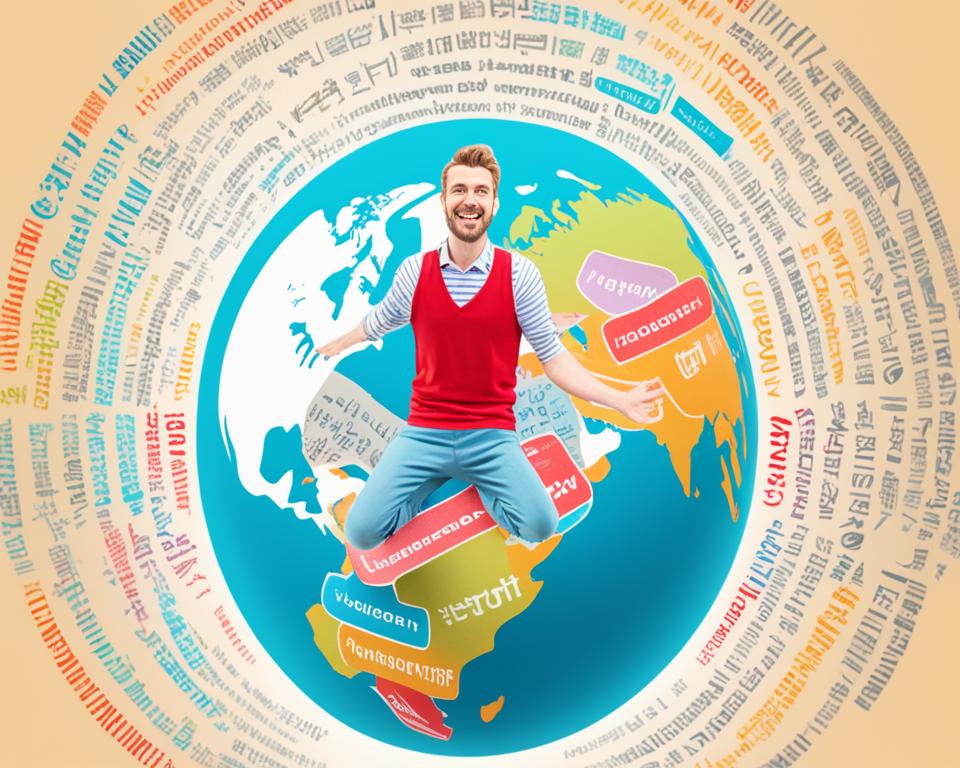
Personalized Language Pathways for Art Professionals
In the increasingly globalized art world, art professionals can benefit from personalized language education pathways that cater to their specific needs and goals. By embracing a customized approach to language learning, these individuals can develop the multilingual skills needed to thrive in the international art market and enhance their global competence.
Online Language Courses
One innovative solution for art professionals seeking to expand their linguistic abilities is the integration of online language courses. These flexible, technology-driven learning experiences allow individuals to engage with personalized language pathways at their own pace, accommodating their busy schedules and diverse learning preferences. Whether they are seeking to master a new language or refine their existing multilingual skills, online courses provide art professionals with a convenient and accessible avenue to language acquisition.
Educational Technology for Language Acquisition
Alongside online language courses, the realm of educational technology offers a wealth of innovative solutions to support the language education journey of art professionals. From immersive virtual reality experiences to AI-powered language assistants, these cutting-edge tools can enhance the personalized language pathways available to art professionals, catering to their unique learning styles and accelerating their progress in language acquisition. By embracing the transformative potential of educational technology, art professionals can effectively develop the multilingual skills that are increasingly essential for success in the global art market.
Intercultural Competence: Bridging the Gap
Developing intercultural competence is crucial for art professionals navigating the global art market. By learning new languages and immersing themselves in diverse cultural contexts, individuals can enhance their ability to appreciate and engage with art from around the world, fostering greater cross-cultural understanding and collaboration.
Language Learning and Art Appreciation
Through the pursuit of multilingual skills, art enthusiasts and professionals can deepen their understanding and appreciation of art from various cultural traditions. By bridging linguistic barriers, they can gain access to a wealth of global artistic expressions, unlocking new perspectives and fostering a greater sense of cultural exchange within the international art community.
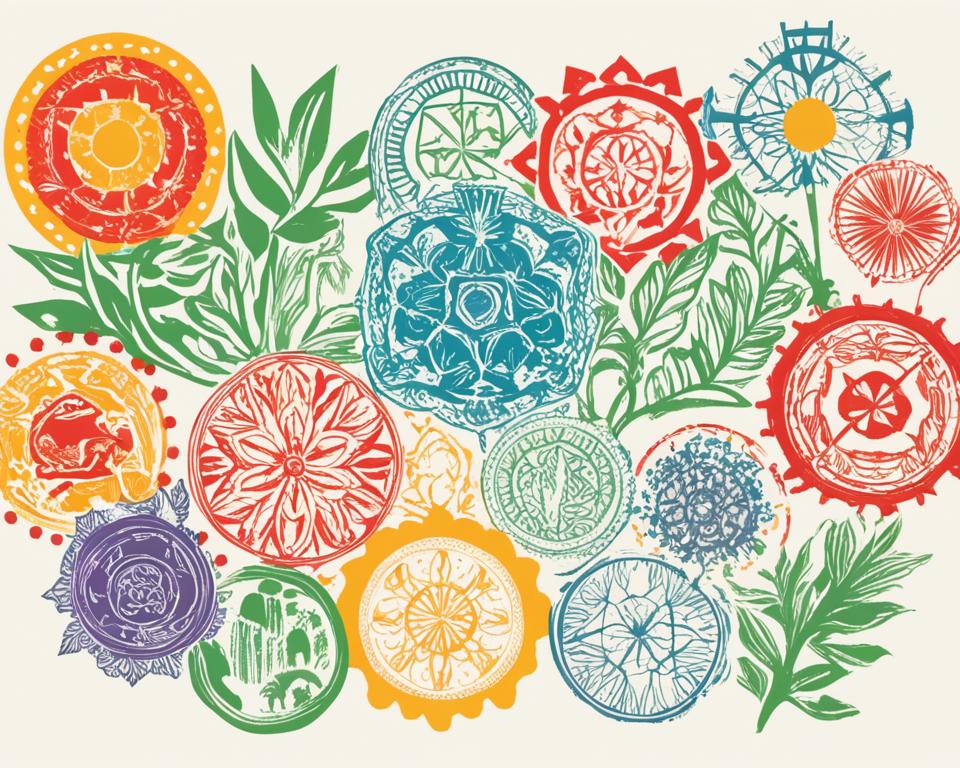
Engaging in language learning allows individuals to immerse themselves in the nuances of different societies, ultimately enhancing their intercultural competence and their ability to navigate the complexities of the global art market. This holistic approach to personal and professional development can prove invaluable for art professionals seeking to establish themselves as global citizens within the dynamic and ever-evolving world of international art trading.
Language Skills and International Art Fairs
In the dynamic world of international art fairs, language skills serve as a powerful tool for art professionals seeking to thrive in the global art market. By mastering multiple languages, these individuals can unlock a wealth of opportunities, from building robust industry connections to negotiating advantageous deals and effectively marketing their work to a diverse audience.
Networking and Negotiation Strategies
Navigating the intricate web of international art fairs requires the ability to communicate effectively with a wide range of stakeholders, including gallery owners, collectors, and fellow artists. By speaking multiple languages, art professionals can forge stronger, more meaningful connections, fostering a global network that transcends linguistic and cultural barriers. Additionally, the art of negotiation is greatly enhanced by multilingual proficiency, as art professionals can deftly navigate the nuances of deal-making, ensuring their interests are well-represented on the global stage.
Multilingual Marketing for Art Events
Successful participation in international art fairs demands a multifaceted approach to marketing, one that can resonate with a diverse global audience. By leveraging their language skills, art professionals can craft targeted, culturally-sensitive marketing campaigns that effectively communicate the essence and value of their artistic offerings. From creating multilingual promotional materials to delivering captivating presentations in the language of their target audience, these individuals can establish a strong, global brand presence and attract the attention of art enthusiasts worldwide.
The seamless integration of language skills into the international art fair experience not only enhances personal connections and negotiation prowess but also serves as a powerful catalyst for global connectivity and cultural exchange within the art world. By embracing linguistic diversity, art professionals can elevate their success in the global art market, forging lasting partnerships and inspiring a deeper appreciation for the transformative power of art across borders.
https://www.youtube.com/watch?v=dJvBo_ofKWk
Linguistics Studies for Art Historians
For art historians and researchers, linguistic competencies are essential for effectively accessing, interpreting, and communicating scholarly information across cultural and linguistic boundaries. By engaging in the study of linguistics, these professionals can develop the skills needed to navigate the multilingual resources and publications that are crucial for their work, ultimately enhancing their cross-cultural understanding and the impact of their research within the global art community.
Language Acquisition Techniques for Researchers
Researchers in the field of art history can greatly benefit from incorporating language acquisition techniques into their scholarly pursuits. By mastering diverse languages, they can unlock a wealth of multilingual resources, engage in productive cross-cultural dialogues, and effectively disseminate their findings to an international audience. This not only strengthens their ability to interpret and analyze art from a global perspective but also fosters greater scholarly communication and collaboration within the art history community.
| Linguistics Studies | Benefits for Art Historians |
|---|---|
| Comparative Linguistics | Develop a nuanced understanding of how language structures and cultural influences shape the interpretation and appreciation of art across different regions and time periods. |
| Sociolinguistics | Gain insights into the social and cultural contexts that inform the creation, reception, and scholarly discourse surrounding artworks, enabling more informed and inclusive analyses. |
| Historical Linguistics | Uncover the linguistic evolution and cultural transformations that have influenced the meaning and significance of art throughout history, providing a more holistic understanding of artistic traditions. |
By embracing linguistics studies, art historians and researchers can enhance their cross-cultural understanding, strengthen their scholarly communication, and broaden the impact of their work within the global art community.
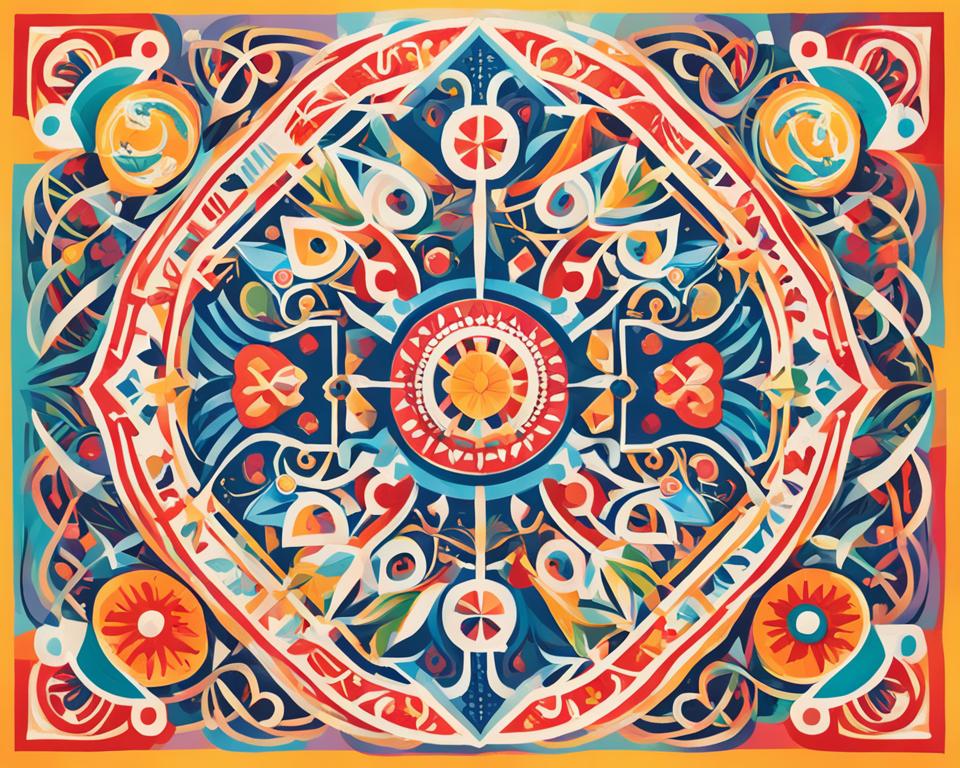
Conclusion
In conclusion, embarking on a language education journey can be a truly transformative experience, unlocking a world of possibilities in the global art market. By developing multilingual skills, individuals can engage in cross-cultural communication, foster international collaborations, and enhance their success in the ever-expanding world of international art trading.
The ability to navigate linguistic diversity and cultivate intercultural competence is paramount in today’s globalized art landscape. Through personalized language pathways, art professionals can acquire the necessary tools to bridge cultural gaps, appreciate diverse artistic expressions, and establish themselves as global citizens within the art community.
As we strive to foster greater cultural exchange and promote the universal language of art, the mastery of multiple languages stands as a powerful catalyst for achieving this vision. By embracing this language education journey, we can unlock new horizons, forge enduring connections, and elevate the art world to new heights of understanding and appreciation.
FAQ
How can learning a new language benefit art professionals in the global art market?
What are the advantages of embarking on a language education journey as an artist?
How can multilingual skills benefit artists in cross-cultural collaboration and communication?
What is the significance of understanding the multilingual nature of international communication in the art market?
How can language education contribute to the development of global citizenship for art professionals?
What are the personalized language education options available for art professionals?
How does intercultural competence enhance the appreciation and engagement with art from around the world?
What are the benefits of language skills in the context of international art fairs?
How can linguistics studies benefit art historians and researchers?
Source Links
- https://www.middlebury.edu/language-schools/blog/why-you-should-learn-second-language-and-gain-new-skills
- https://www.eeas.europa.eu/eeas/creating-spaces-universal-language-art-and-culture_en
- https://www.noslangues-ourlanguages.gc.ca/en/blogue-blog/langue-internationale-global-language-eng
